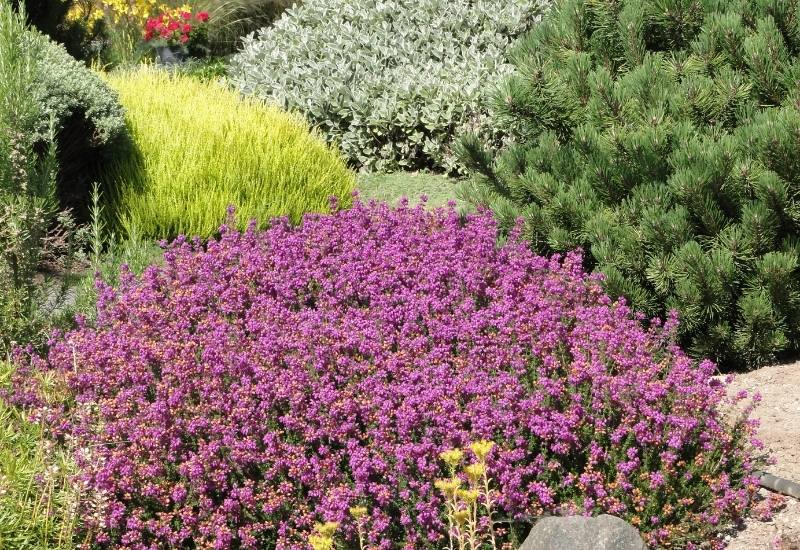
Planting drought tolerant shrubs is a great way decrease water consumption, especially if you live in and area that experience drought or water restrictions.
Bushes that are well-adapted to heat and drought will not only cut down on water costs, but they will also cut down your maintenance once established, and save you the worry that your plants will wither without water.
While most of these drought-tolerant species are less thirsty, they still need to be watered occasionally during dry spells when they are first planted. Once established, they can be water-wise additions to a landscape.
In fact, shrubs that love hot, dry weather are also quite sturdy, do well in poor soil and often disease free; but above all… They can be really excellent additions to your arid landscape, with impressive blooms, colorful lush foliage, or all of the above!
Whatever reason has brought you to this topic, we are here to help, from evergreen to flowering here 14 of our favorite drought-resistant shrubs to keep your green haven stay green – even without water!
A few More Reasons Why You Should Grow Drought Tolerant Shrubs
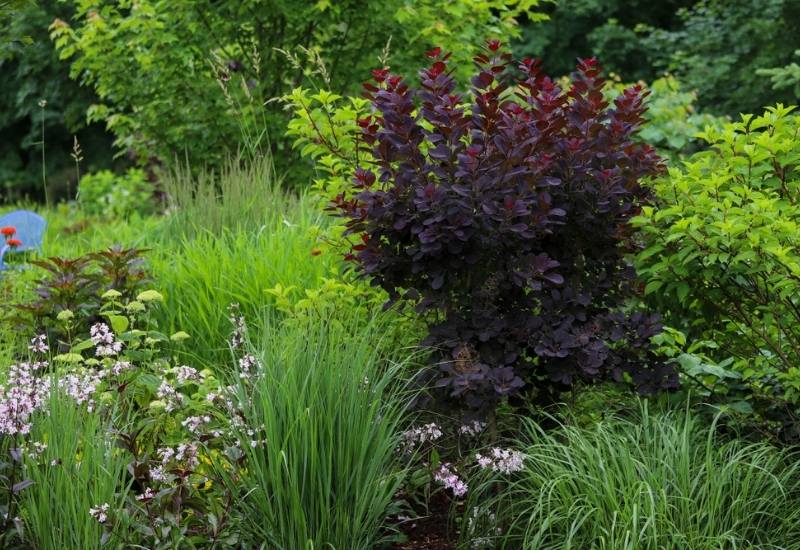
We have already mentioned the main advantages of shrubs that tolerate dry weather, but there are many more advantages in growing them than you may think……
Quite convenient, aren’t they? But let me tell you a tip…
How to Prepare the Soil for Drought Tolerant Shrubs
One key thing you need to know about drought tolerant shrubs is that they need excellent drainage. They cannot stand pockets of stagnant water around their roots.
It needs to flow away freely, or they may develop diseases. This can be a problem especially with clay soil.
Make sure you add lots of drainage material, like sand, gravel, even perlite in pots, to improve the soil.
And how about growing only drought tolerant plants?
How to Use Drought Tolerant Shrubs in a Xeric Garden
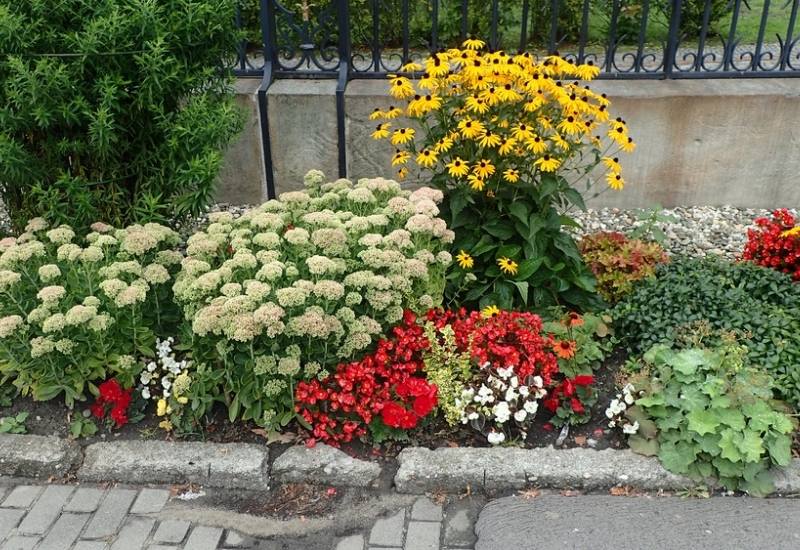
Xeriscaping, sometimes also called a “dry” garden is a method of landscaping design which involves choosing as many native, drought-resistant plants to create a beautiful landscape while significantly reduce the need for irrigation.
Shrubs are ideal, because they provide some shade, which, again, retains some moisture, and they also provide abundant natural composting material, as these gardens risk losing nutrients and fertility.
Finally, like all bushes, they bring the garden together. And you can do it with any or more of the beautiful “dry beauties” we have been waiting eagerly to show you…
14 drought tolerant Shrubs That Will Thrive In Hot, Dry Weather
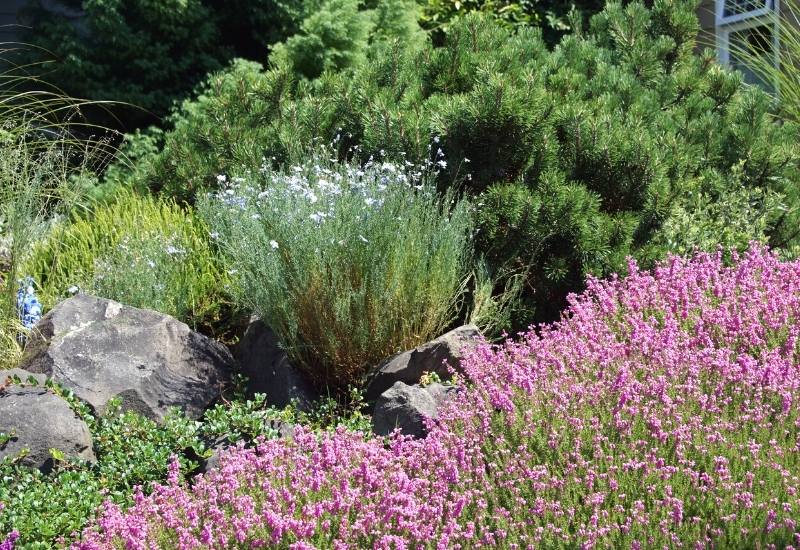
Here are 14 great drought-resistant which are well-adapted to escape, avoid, or tolerate arid conditions and dry spells through prolonged periods.
1: Lavender (Lavandula spp.)
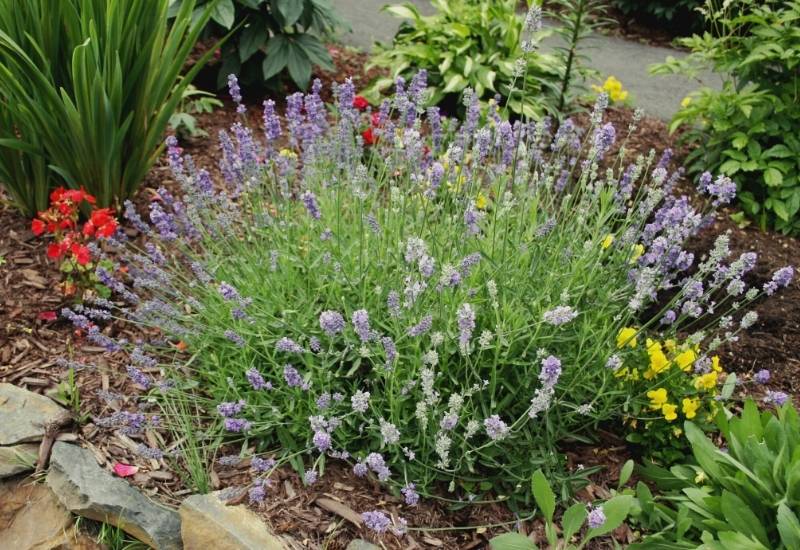
Lavender is one of the greatest drought tolerant small flowering shrubs in the world! It will give you super fragrant blooms in purple, pink or white sometimes for months, and there are many types to choose from,
English, French, or stoechas, with its showy blooms… But this plant also has a massive role in gardens: it attracts more butterflies, bees and pollinators than virtually any other plant…
The foliage is finely textured, blue gray or green, and there are small and medium sized varieties to choose from. Of course, you can also use it to perfume your home, clothes, and even for your body…
Lavender in containers or in flower beds and borders is always a guarantee of blossoms and vitality; just imagine a path flanked by aromatic blooms…
You can use it in informal designs, but honestly it can work in formal settings too; just trim it into a round shape, put it in a lovely pot and you have an architectural element.
2: Butterfly Bush (Buddleja spp.)
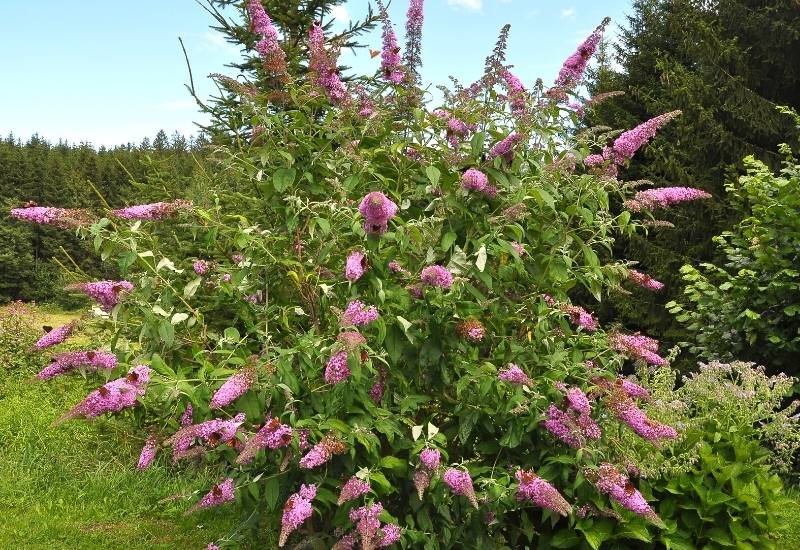
Butterfly bush is a drought tolerant blooming champion! This fast-growing shrub will give you spikes of colorful flowers that jut out from the foliage and nod at the tip…
With loads of small, trumpet shaped blooms in shades of purples white, pink or even yellow, often fragrant, they are a magnet for pollinators.
The lance shaped foliage is usually bright green, dense and fresh looking, which can give a different twist to a dry looking garden, bringing a touch of freshness. It is a late bloomer and there are many award winners in its ranks.
Butterfly bush has a very herbaceous look, which means that it looks good in natural looking gardens, in borders or large beds of traditional, cottage and informal gardens.
It will never suit a formal design. It is low maintenance and it can fill in large gaps with foliage and flowers.
3: Elephant Bush (Portulacaria afra)
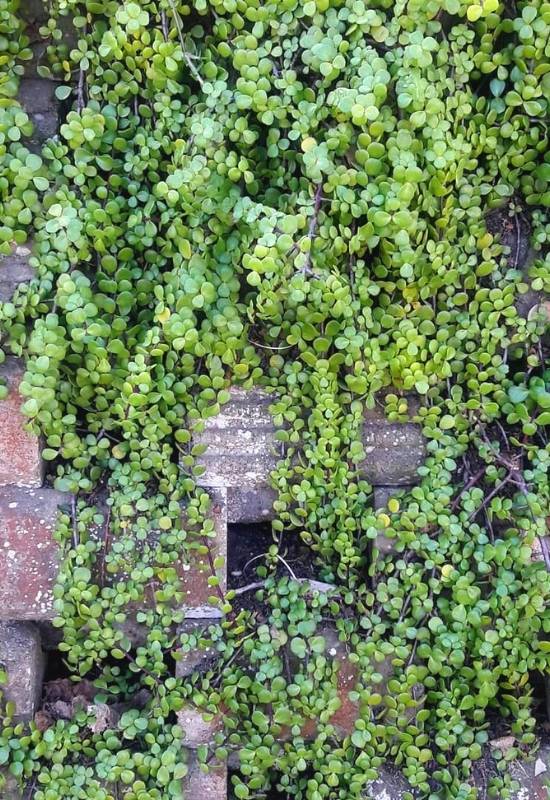
Elephant bush is arguably one of the shrubs that resist drought best in the world. It can literally go months without water, and in fact there is a saying among botanists,
“It never dies!” It is a succulent with arching branches of a warm purple color, and loads of heart shaped green leaves on them, which almost look like candies. In fact you can eat them…
It is a slow grower but a super sturdy plant indeed, often off balance as a habit – it tends to grow to one side, for whatever reason, but this adds to its strong personality!
Elephant bush looks great in containers on terraces but also in gardens, as it looks great against tiles, terra cotta etc.; in fact it is also ideal for rock gardens, gravel gardens and courtyard gardens. But it is a must in a xeric garden.
4: Rosemary (Rosmarinus officinalis)
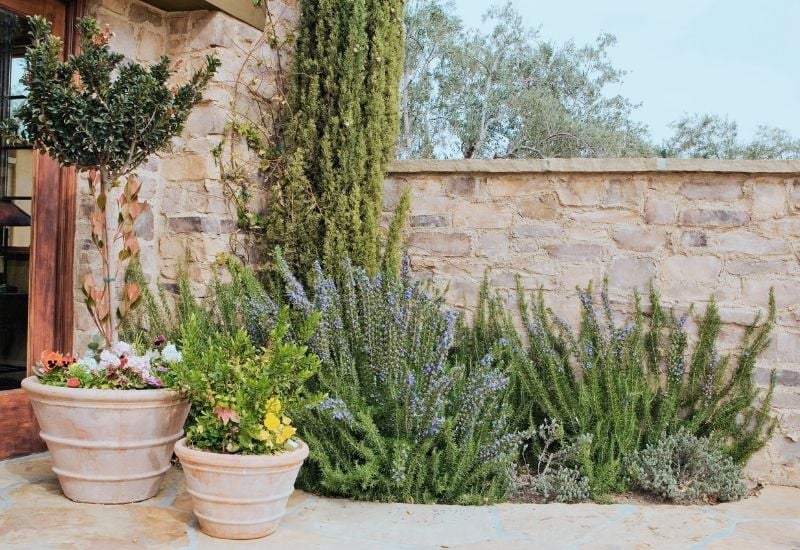
Grow rosemary shrubs where water is scarce and they will love it! This perennial evergreen shrub is very sturdy and it has oily leaves that require very little moisture.
And if you only know the evergreen and aromatic needle like foliage that grows on upright branches think again! To start with there are creeping and even trailing varieties, and then… It has amazing blooms in the most unexpected season, winter.
It will fill with lots of small blue to lavender flowers that attract pollinators when your garden most needs it!
Rosemary is very low maintenance and ideal for containers as well as dry soil, especially Mediterranean looking yards or gardens, bit it is really adaptable to all informal settings including coastal gardens. And yes, you can use it to cook!
5: Tree Tobacco (Nicotiana glauca)
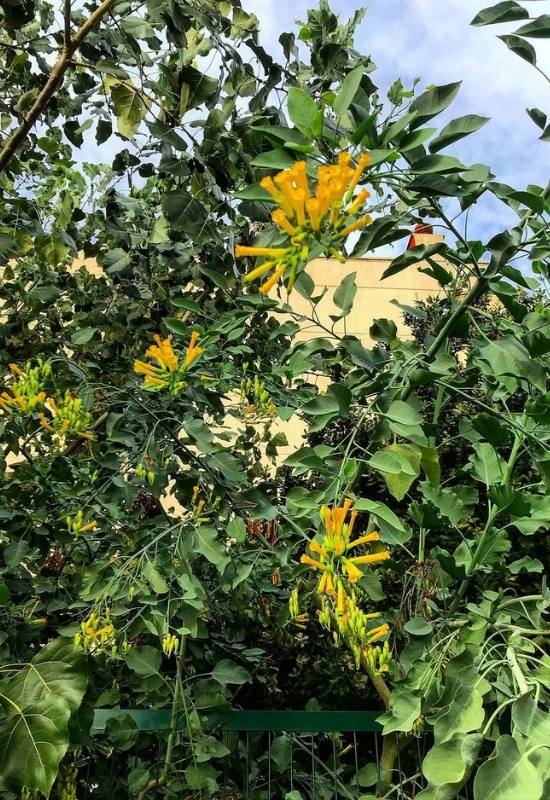
Tree tobacco is actually a beautiful annual shrub that tolerates dry spells really well. The flowers are long and tubular, with five little petals at the end, usually bright green but in some varieties they are cream or green.
The foliage is broad, pointed and usually blue but sometimes green.it is actually tobacco, so it is toxic, but an amazing plant to grow, really decorative and beautiful. It can spread naturally in the right conditions.
Tree tobacco comes from South America to grave your terraces, dry, Mediterranean and gravel gardens, it will grow in coastal regions and it really has a look that your guests can’t ignore.
6: Chaste Tree (Vitex agnus castus ‘Shoal Creek’)
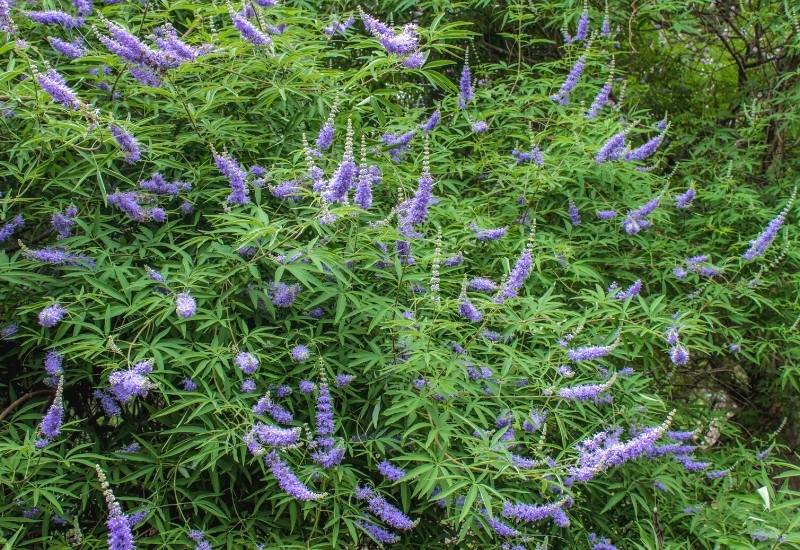
Chaste tree is a large deciduous shrub that blooms profusely even if you don’t water it too often… Loads of violet and fragrant flowers will cram on long spikes, a foot long (30 cm) that curve out and point up, abundant and very showy.
The palmate foliage is dense and grayish green in color, very decorative and texture rich. It is a very strong and disease resistant plant,
which grows fast with a spreading habit and requires low maintenance. It is a winner of the Gold Medal Award of the Pennsylvania Horticultural Society.
Chaste tree is ideal to fill in large spaces in a short time, even in dry regions; its uses range from foundation and specimen planting to hedges and large borders, but always in natural and informal gardens, including coastal ones.
7: Crown of Thorns (Euphorbia milii)
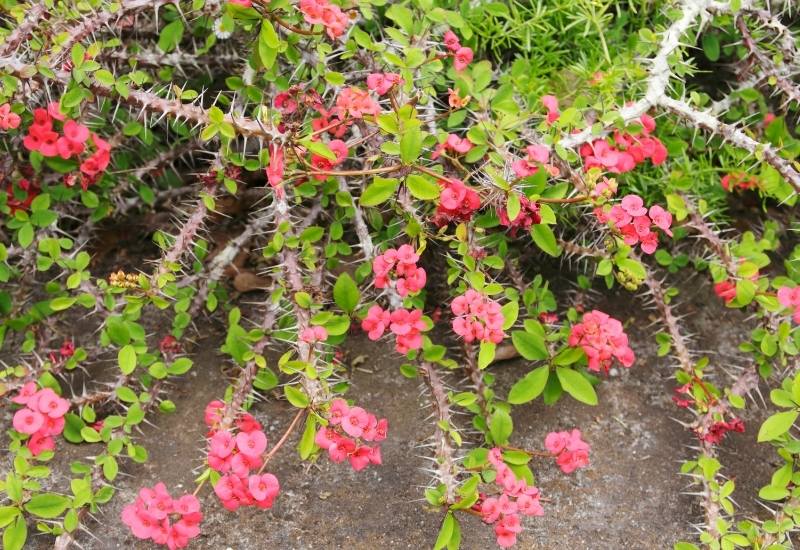
Crown of thorns is a shrub forming succulent that can go weeks without water. The thorns are on the stems, which are gray brown, bark looking, bit actually soft…
The small oval light green leaves add to the bright bushy look of this unusual plant. But the “cherry on the cake” are the red, round flowers that often form a crown on top of the plant; they only have two bean shaped and intersecting petal looking bracts, very original and in theme with the rest of this “mystic” beauty.
And, well, they can stay on all year round. Each one lasting months… It is a winner of the Award of Garden Merit by the Royal Horticultural Society.
Crown of thorns looks like a “plastic” plant, very steady, almost surreal, and it is ideal for terraces and patios in containers and pots, or rock gardens and coastal settings. It is very common all over the Mediterranean.
8: Heavenly Bamboo (Nandina domestica)
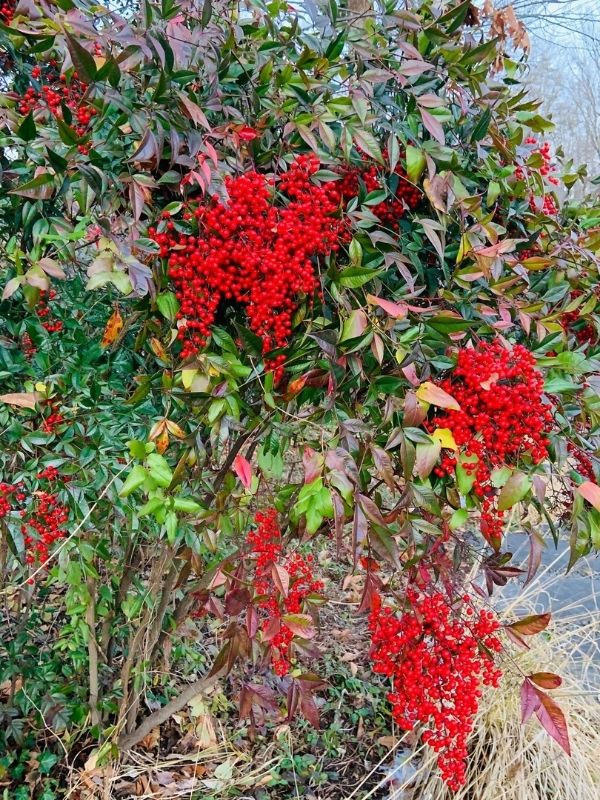
Heavenly Bamboo is a semi evergreen shrub with a great color display, even with little water… The foliage is pinnate and elegant, and it changes color through the seasons, from bright green to purple, fading slowly from one tint into another.
In spring, it will light up with arching panicles of small but pretty white flowers. Butterflies and pollinators love them too!
In turn, they will give way to clusters of bright red berries, and this will be the time for birds to visit you. It is a very sturdy plant, and adaptable to different growing conditions.
Heavenly bamboo can bring texture and color, as well as rich foliage to dry gardens of most sorts, from urban to country designs, in beds, borders, hedges and wind screens; and it looks great against a wall with its ever changing look.
9: Lantana (Lantana spp.)
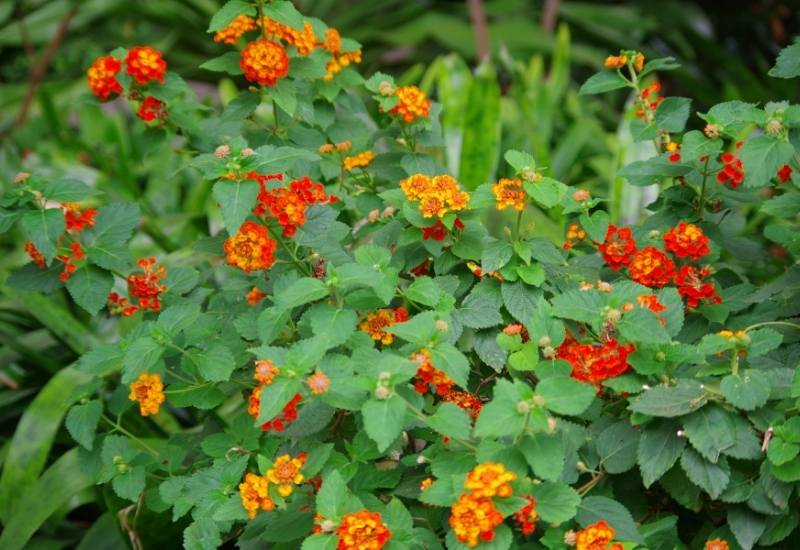
Lantana is a fun and kaleidoscopic heat-loving flowering shrub for dry gardens. The flowers are just incredible. Small and clustered together in round inflorescences, they are an explosion of colors!
Yes, in the same group you will find red, yellow, purple orange, or white, pink, and yellow… They come generously on the broad and green, soft looking leaves, and they keep going for months! There are also dwarf varieties for small places, as well as big and fast growing ones.
Lantana has a herbaceous look with a dense and round habit, so grow it in hedges, borders, even beds or pots for a fresh but bright look; lots of foliage in hot and dry places is hard to achieve, and if this is your goal, lantana is your man – well, your shrub…
10: ‘Blue Star’ Flaky Juniper (Juniperus squamata ‘Blue Star’)
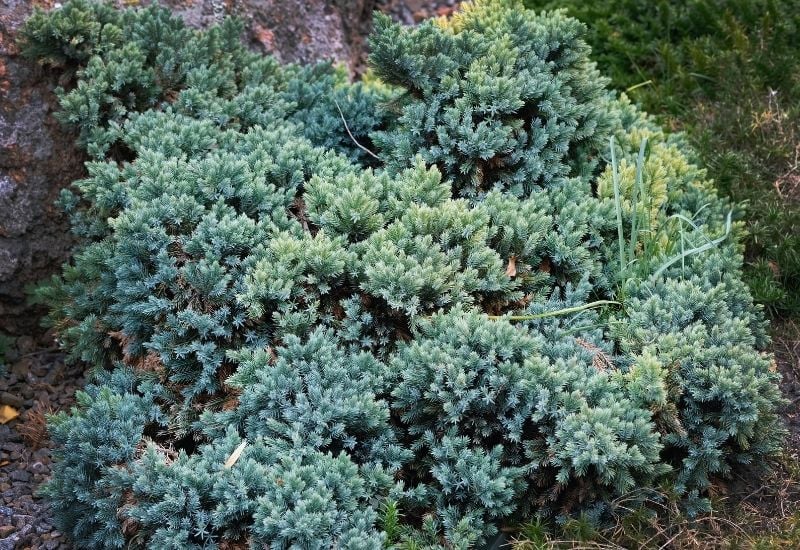
For colder but still dry climates, ‘Blue Star’ flaky juniper is a great dwarf evergreen shrub that’s won the Award of Garden Merit by the Royal Horticultural Society…
The color of the foliage is what makes it special: it is really blue, with younger needles lighter in color, and older ones taking on a darker shade.
Small and compact, with a round habit and dense but finely texture foliage, it brings shape and structure as well as color to your garden or terrace.
‘Blue Star’ is a low maintenance juniper that fits most settings: traditional, courtyard, urban, gravel, coastal and rock gardens, but you can have it on your terrace as well, because it fits well into containers.
11: Frangipani (Plumeria rubra)

Excellent for dry and hot regions, frangipani is a large flowering shrub with an exotic look. The flowers have a spiral shape, with elliptical petals of the brightest magenta red with orange dashes inside; they are large, 4 inches across (10 cm) and very fragrant indeed!
They give rise to long winged follicles containing seeds. The dark green, oval, leathery and glossy leaves set off the blooms perfectly well.
This shrub can be pruned into a small tree as well, and the fleshy and succulent gray brown branches have a wonderful harmony as well.
The judges of the Award of Garden Merit by the Royal Horticultural Society must have taken all these beautiful characteristics when they gave this bush the prize.
Frangipani is ideal for large spaces that want to have a tropical or Mediterranean look, making the best of its showy and lush appearance in borders, as a specimen plant but also in large containers.
12: ‘Nicoline’ Japanese Quince (Chaenomeles x superba ‘Nicoline’)
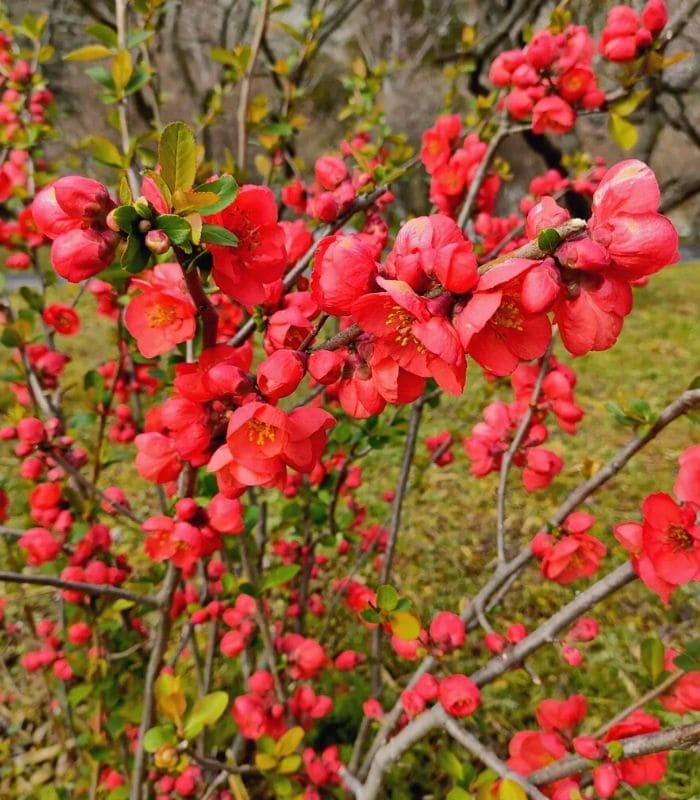
All Japanese quince (Chaenomeles) shrubs are drought tolerant, but we picked one for you that’s perfect for a hot and sunny feel… Why? It has the brightest crimson red flowers ever!
With golden pistils inside, it has round and fiery petals, which gives your garden a warm, intense and very summery look, even if they bloom in spring.
Then, when the hit season comes, you get the opposite: green and fragrant fruits mix with the equally green and bright foliage, for a touch of freshness when temperatures rise.
This combination has secured it the Award of Garden Merit by the Royal Horticultural Society.
‘Nicoline’ is a fairly small variety of Japanese quince, which you can fit into modest gardens in borders and hedges, or to cover walls, or even on river banks and slopes.
13: Torch Aloe (Aloe arborescens)
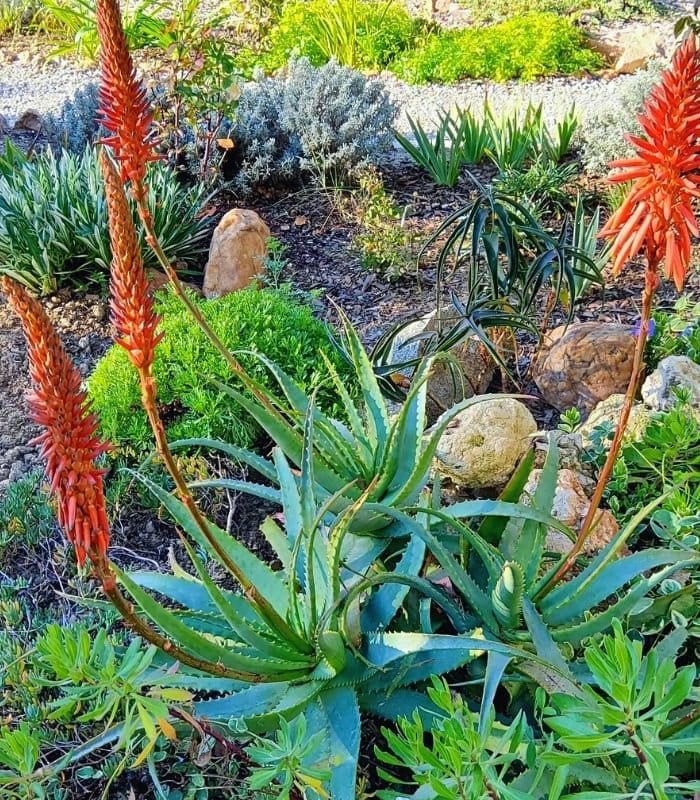
For a super exotic and very drought tolerant shrub, have a look at torch aloe… The succulent rosettes form a very thick, decorative large bush with colors that range from green to purple, depending on the season and on the quantity of light.
On top, you will get large spikes of bright red flowers that look like candles, or torches, indeed. They are tubular flowers that open from the bottom and move up,
keeping the fire on in your garden for months on end! This variety of aloe is also very medicinal, in some respects even better than its famous relative Aloe vera.
Torch aloe is ideal for desert, cactus, xeric, tropical and Mediterranean gardens, but go ahead if you have a gravel or courtyard garden too. And you can have it in containers to keep on terraces and patios as well.
14: ‘Provence’ Oleander (Nerium oleander ‘Provence’)
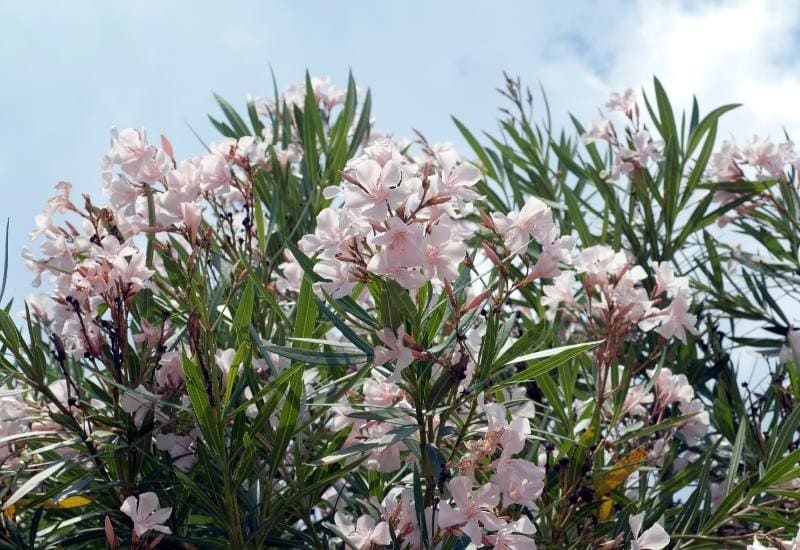
Oleanders are classic shrubs in dry regions, but we picked the cultivar ‘Provence’ for you because… It’s not just the name of the famous sunny Mediterranean region of France…
It’s also because the flowers are very elegant, coming in clusters, super fragrant and with salmon pink petals lit up by a dash of bright yellow.
Then you have the evergreen foliage, which is very abundant, leathery (oily, actually, hence the name) and glossy, elliptical in shape. It will produce lots of branches and flowers, but you can still train it into a small tree if you wish.
Like all oleander shrubs, ‘Provence’ is low maintenance and suitable for most designs and settings, from patios to borders in informal gardens, from gravel to coastal gardens, and you can grow it in containers as well. Shaped into a tree, it can even look good in a formal space.
Drought Tolerant and Magnificent Shrubs
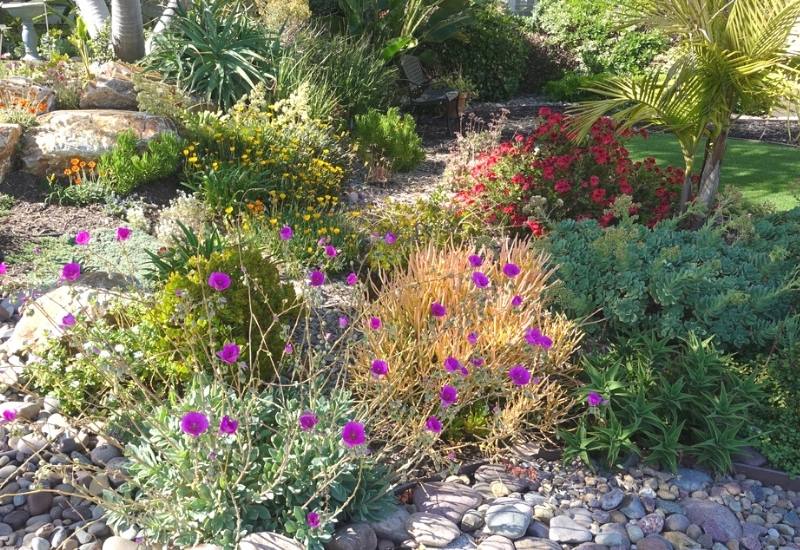
Put down your watering can then! For an easier life, for a dry regions, or just because you like these shrubs, you have a great choice of really amazing bushes from small to big, from exotic to temperate looking… All will grow even if you are forgetful, all will give a lot, and ask so very little!

Written By
Amber Noyes
Amber Noyes was born and raised in a suburban California town, San Mateo. She holds a master’s degree in horticulture from the University of California as well as a BS in Biology from the University of San Francisco. With experience working on an organic farm, water conservation research, farmers’ markets, and plant nursery, she understands what makes plants thrive and how we can better understand the connection between microclimate and plant health. When she’s not on the land, Amber loves informing people of new ideas/things related to gardening, especially organic gardening, houseplants, and growing plants in a small space.
